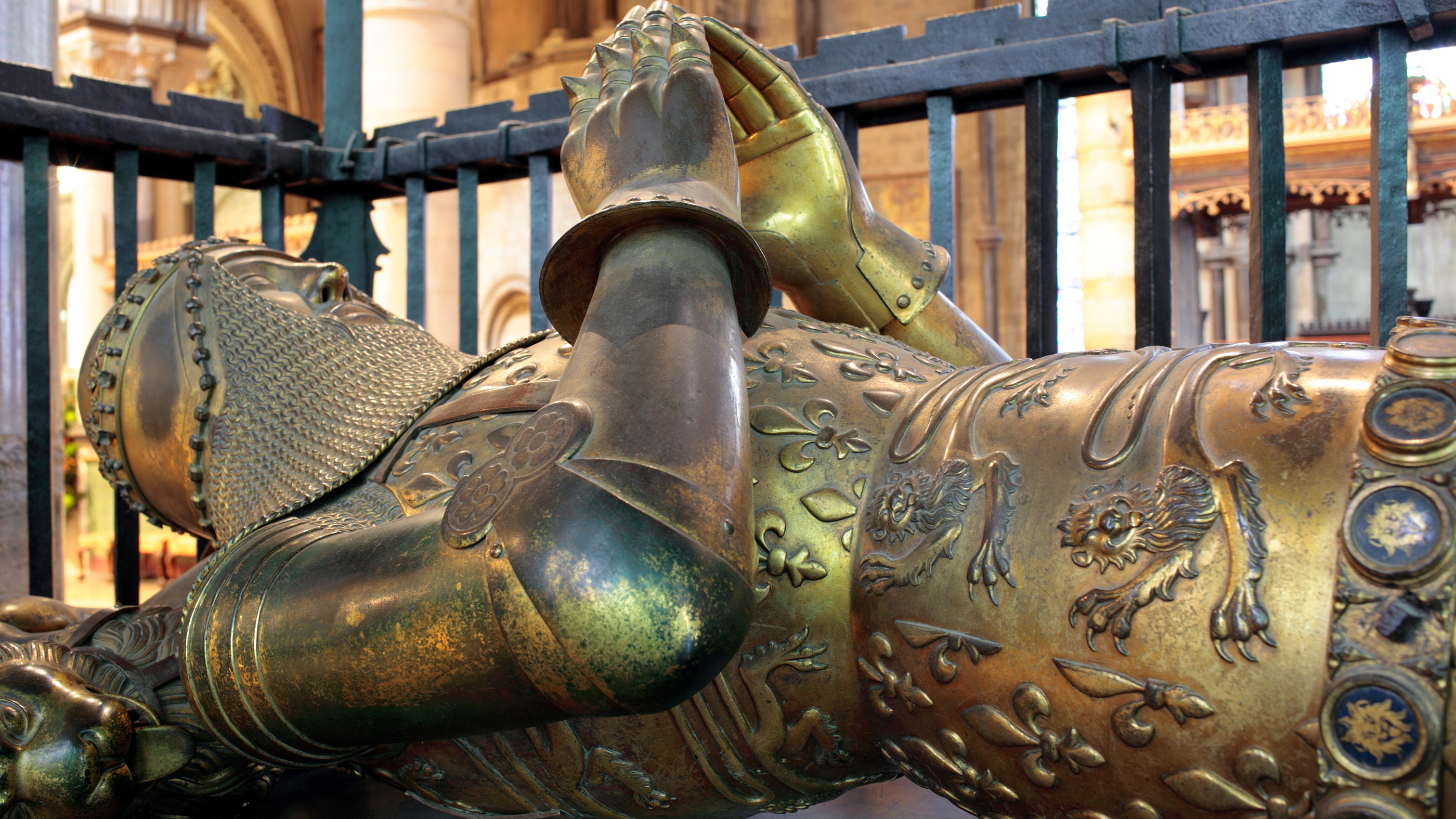Tomb effigy of the 'Black Prince' was likely medieval propaganda to bolster his son's failing rule
The king's effigy was unprecedented in medieval England.

An "unprecedented" metal tomb effigy of Edward the "Black Prince" was likely created by his son King Richard II as medieval propaganda to bolster his troubled reign, new research reveals.
Edward of Woodstock, commonly known as the Black Prince, was born in 1330 and was the heir to the English throne. He became famous for a series of military victories in France during the Hundred Years' War that culminated in the capture of the French King Jean II. The name "Black Prince" was first recorded in the 16th century, but it's unclear how he got that name. He died, likely of dysentery, in 1376, but while he was dying he had a will written stating that he wanted his tomb effigy to be made of metal and "fully armed in plate of war" — something that was "unprecedented" in England at the time, according to the researchers.
A year later, the Black Prince's father, King Edward III, died, and the Black Prince's eldest surviving son, Richard II , ascended to the throne at age 10.
Related: 10 epic battles that changed history
The effigy is located at Canterbury Cathedral in southern England, above a marble chest. Now, new research has revealed that the metal alloys used in the Black Prince's effigy are almost identical to those used in another tomb effigy created for the Black Prince's father, Edward III, researchers reported in an article published in Burlington Magazine, a monthly publication devoted to the fine and decorative arts. The near-identical metal alloys, combined with other design similarities — such as the style of lettering for the tomb epitaphs — suggests that the effigies were likely created by the same person or people using the same source of materials at about the same time, the researchers wrote in the article.
Additionally, the researchers examined historical documents that recorded a ship in 1386 carrying marble for Edward III's tomb. This came at a time when Richard II was experiencing serious trouble during his reign, having recently put down a peasants' revolt during which the Tower of London was stormed. As such, both effigies were likely created around 1386, and they probably served to prop up Richard II's rule, the researchers wrote.
"It's likely Richard II took up his father's tomb project in 1386 in part as a way of asserting his authority now [that] he had reached adulthood," Jessica Barker, a senior lecturer in medieval art at the Courtauld Institute of Art in London and lead author of the new research, told Live Science in an email.
Get the world’s most fascinating discoveries delivered straight to your inbox.
At this time Richard II was pursuing a number of projects to commemorate his family's exploits, including commissioning an author known as Chandos Herald to write a poem about the Black Prince in 1385 called "La vie du Prince Noir."
"Large-scale, visible projects were often undertaken during times of political stress, as a highly visible symbol of power," Emily Pegues, a curatorial assistant at the National Gallery of Art in Washington, D.C., and co-author of the new research, told Live Science in an email. "We see this happen even today when politicians announce grand building plans to distract from damaging political problems, and visibly assert their power," Pegues said.
For Richard II, however, his efforts to prop up his reign ultimately failed. In 1399, he was deposed by his cousin, who became King Henry IV, and Richard died a year later.
Editor's note: This story was updated at 8:34 p.m. EST on Nov. 9 to state that the marble chest beneath the effigy likely does not hold the Black Prince's remains. The location of his remains is uncertain. An earlier version of this story stated that the Black Prince's remains were in the marble chest.
Originally Published on Live Science.

Owen Jarus is a regular contributor to Live Science who writes about archaeology and humans' past. He has also written for The Independent (UK), The Canadian Press (CP) and The Associated Press (AP), among others. Owen has a bachelor of arts degree from the University of Toronto and a journalism degree from Ryerson University.


